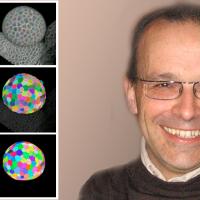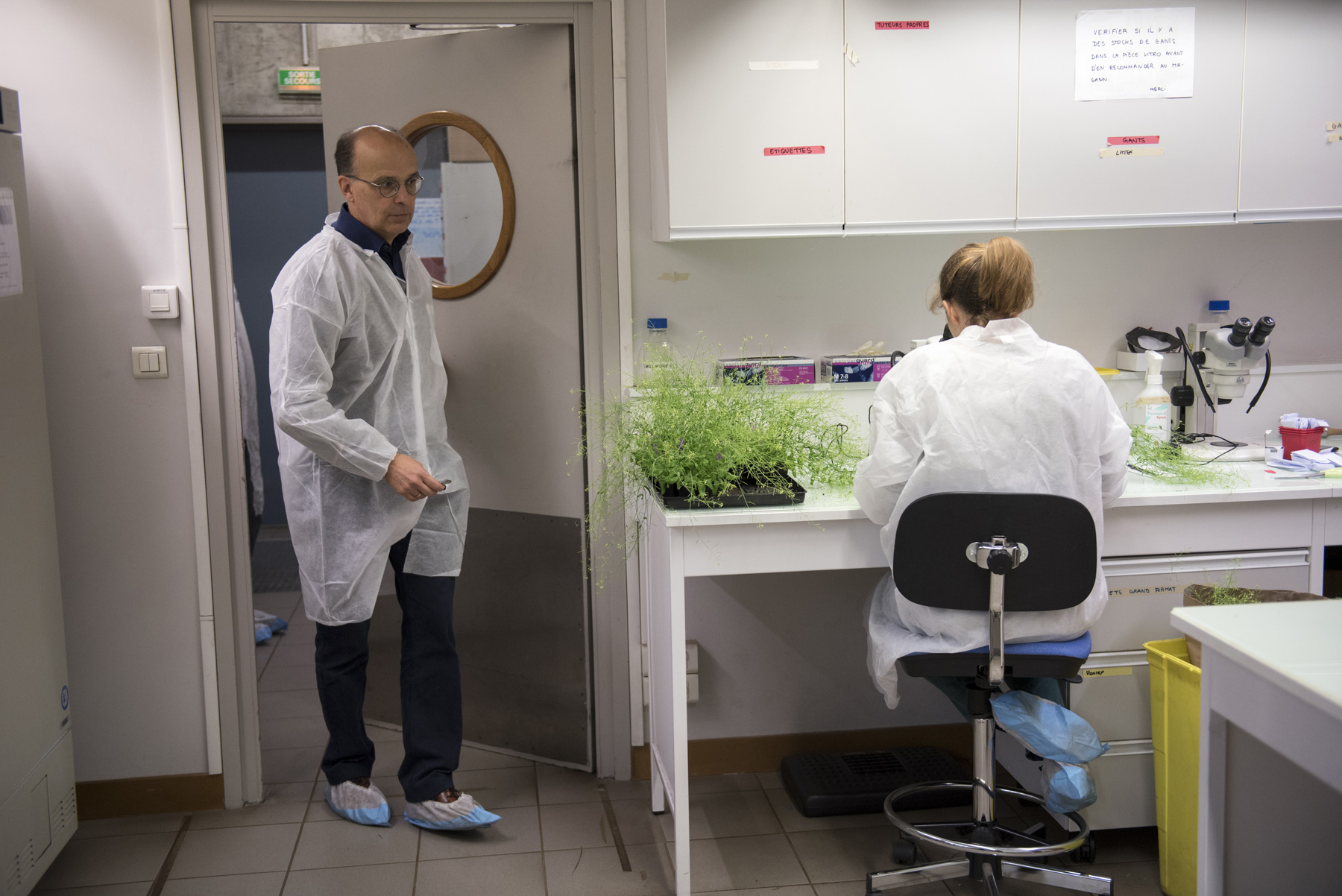
Agroecology Reading time 7 min
Jan Traas, the shape of things to come
Published on 08 December 2015
Since he was a child, Jan Traas has been drawing comics. Over time, he also created one that recounted his life and the path of an open-minded scientist ready to travel the world as he followed his passion: the shape of plants. From Amsterdam to Norwich, Wageningen, Versailles and finally Lyon, he has worked tirelessly to unravel the mystery of the growth and differentiation mechanisms of plant organs. Early on, Jan specialised in microscopy, and images have proven to be a crucial tool, as, in his words, nothing better “combines the beauty of images with biological perspective”.
Watching plants grow through modelling
Jan’s graphic world is full of colourful diagrams and films that offer a 3D look at plants growing, stems lengthening and buds expanding like balloons. “The comparison to a balloon is fairly accurate,” he explains, in the soft voice for which he is known. “The tip of a growing stem is taut like a balloon. Each cell is subject to tension forces due to internal pressure and can react differently. The stem’s growth depends on the behaviours of individual cells as well as how they interact. It is a complex system we’re trying to model based on simple physical and biochemical laws.”
Creative and attentive
The beauty of images with biological perspective
Plant growth is therefore not dependent on genes and hormones alone, but also on the mechanical pressures to which plants cells are sensitive and respond. By demonstrating this principle, Jan and his colleagues have been published in renowned journals and received a grant from the European Research Council, the Holy Grail of the research world. Jan has directed more than 11 theses on the subject, and his laboratory in Lyon, filled with young and cosmopolitan researchers, attracts some of the world’s top talent. “Creative and attentive – two words that describe Jan to a T. He trusted me and I was able to develop my project in complete autonomy,” says Olivier Hamant, a close colleague.
A groundbreaking and integrative vision
Jan developed a groundbreaking biophysical approach to studying plant growth. He hopes to one day create a model that can integrate all of the components of this complex phenomenon and predict the outcome, which would open up a number of areas for agronomy. After two terms as unit director in Lyon, he will be taking a sabbatical year in Ghent. “We’ll be able to see tiny changes in the cell wall structure of meristems under the influence of various factors, such as auxin.” After this Belgian interlude, Jan will re-join his team in Lyon. “The next step will be to look at genomics. We need to quantify the speed and direction of growth at the cellular level and tie these measurements to differential gene expression. This will allow us to explain the growth mechanisms,” says the insatiable researcher, who estimates the work will take between 10 and 20 years.

- Born in the Netherlands, 58 years old, married, three children
- 1982–1987: Doctoral studies at the University of Nijmegen (Netherlands) and post-doctoral studies at the John Innes Institute (Norwich, Great Britain) on the mechanisms that control cell expansion and division in plants
- 1987: Agricultural Research Department of the Netherlands (DLO)
- 1987: INRA Avignon and later INRA Dijon
- 1991: Cell Biology Laboratory (INRA Versailles-Grignon), became head in 1996
- 2005: Research Director at the Plant Reproduction and Development Laboratory (RDP ENS Lyon / INRA Clermont-Ferrand-Theix)
- Director of the RDP since 2007
- 70 articles published in international peer-reviewed scientific journals
Awards
- Prix Jaffé 2007 for integrative biology, awarded by the Académie des Sciences
- 2009 winner of the Ministry of Research Award
- 2011: ERC Advanced Grant (€2.37 million) for the Morphodynamics project
- 2015: INRA Award for Scientific Excellence
